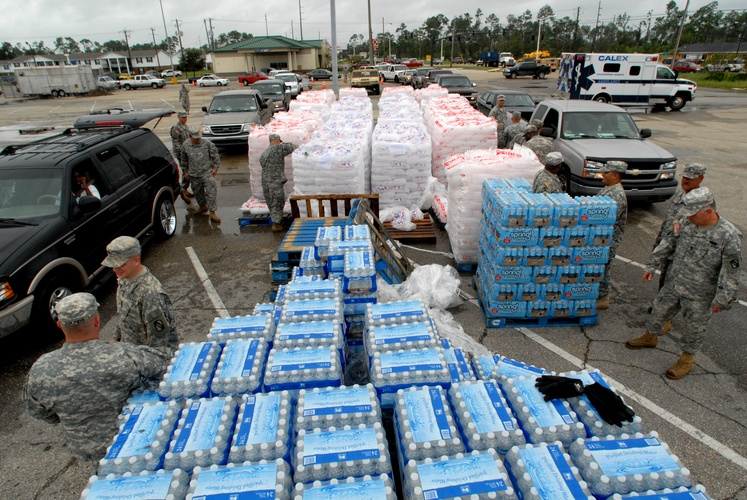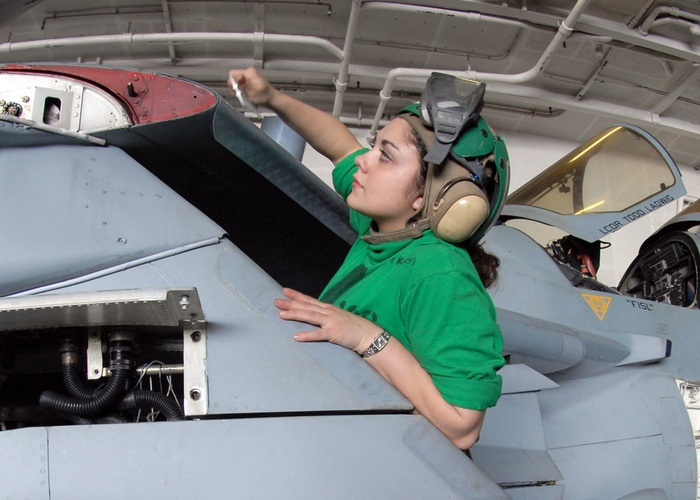T-6 Fleet Damaged As Thunderstorms Rolled Through Enid
Just a few days ago, severe weather rolled through Vance Air Force Base in neighboring Enid, Oklahoma. Unfortunately, the fleet of T-6 Texan IIs stationed at Vance didn’t get away unscathed. According to the Air Force Times, twelve or more T-6s were damaged by the storm and grounded from flight, but the entire fleet of 99 Texans will be thoroughly inspected for storm damage before returning to the mission.
Was there anything that could have made this event less destructive? Or can these aircraft recover more effectively or faster with a strong supply chain for the T-6?
The Ripple Effects Of Missed Training
Primary instruction in the Air Force is one of the most rigorous and regimented training programs in the military. It runs a highly rigid timeline, and the sorties must be accomplished in syllabus order.
Hiccups in the process can quickly derail the months-long program.

But if there are significant delays in any one portion of training, in this case from a severe weather event, it pushes back graduation. But the problems won’t stop there. The next training phase either goes on hold or is missed altogether, and these young student pilots have to wait for the next class to jump in, which could keep them out of the cockpit for an extended period.
But this also messes with the flow of students through the training program after primary training. If too many students are graduated at once, it forces too many students into the next training phase, and so on.
These students get stovepiped because there are only so many aircraft and instructors to go around in each training phase. The downstream consequences of training being taken out of order are a costly disaster in more ways than one.
Unfortunately, nothing can be done about damage from natural disasters, particularly in the areas of the country where most of the training bases are located (Oklahoma, Texas, Mississippi, Florida, etc.). The weather is volatile in all of these states, so it is a calculated risk. Many of these bases use sun shades for the aircraft, but that is not enough when hurricane-force winds come up and thrash the aircraft.
Other Storm-Related Damage To Air Force Aircraft
Unfortunately, this was not the only time that storms in the Air Force fleet had damaged aircraft. The most recent example also happened to a fleet of trainers in Laredo, Texas, at Laughlin Air Force Base, when 39 T-1A Jayhawks were severely damaged by hail.
These jets are not parked under sunshades, which would have likely spared the fleet this damage. Also, the repairs for hail damage are extensive, and had the aircraft out of commission for years. Yes, it took years. The event occurred in February of 2016, and the last aircraft went back into service over five years later.

This shows how long and hard the process is to restore aircraft damaged in natural disasters after they have been damaged.
And for every natural disaster that has happened, there have been several close calls. One that sticks out occurred at McConnell Air Force Base in Wichita, Kansas, in April of 1991. A huge tornado tore across the base and came within a few hundred yards of a significant part of the entire B-1 bomber fleet. To say this would’ve been catastrophic would be an epic understatement.
The reality is that natural disasters can and do occur everywhere, from the most benign locations to the more volatile atmospheric locations. There is nothing we can do to control them.
What Can Be Done About It In The Future?
It isn’t likely that the Air Force will move its fleet from locations with volatile weather. It isn’t practical to do it, so we must keep dealing with it the way we always have.
There are certain structural limitations to putting weather, shades, and sunshades on the flightline, but that is definitely one factor that can help.
Of course, these only work for small aircraft. Large aircraft simply must sit on the ramp and deal with the elements; when storms happen, storms happen. The best we can do is to have measures in place to react to these storms. For T-6 Texans, having a robust supply chain available is essential.
They were operating under sunshades, and they still received storm damage. And this could happen to any of the locations where the Air Force operates Texans. Of course, Oklahoma is world-renowned for its violent weather, but Vance Air Force Base isn’t changing hands and isn’t going anywhere. It is one of the primary pilot training bases, so learning to live with it is best.
In the meantime, it’s most important to ensure that a substantial supply of parts is available for when these happen because these will invariably happen. Depending on the airframe, some of the more sensitive parts, like canopies or windscreens, must be available and in stock to get onto the airplane. These are critical items.

How Long Will Costly Repairs Take?
Unfortunately, there is no way of knowing exactly how long repairs will take. As he saw with the Laughlin Air Force Base fleet of Jayhawks, it can take years, depending on the number of aircraft damaged. The count was significantly lower at Vance Air Force Base last month, but 12 aircraft will still take quite some time, depending on the severity of the damage.
Again, there is nothing we can do to speed up the process of how long repairs take; repairs take as long as repairs take. This is an immutable safety factor that cannot be ignored. You cannot rush repairs on damaged aircraft. But you can rush orders of replacement parts, and that’s what Greenwood Aerospace specializes in: getting parts to you in MIL-SPEC packaging (as required) when you need them and warehousing them for that rainy day when you do need them. Or for procuring those hard-to-find parts for repairs.
Greenwood Aerospace Is Your Trusted Source Of Parts
Whether you’re dealing with a full fleet damage control situation or hard-to-find parts for a King Air at your duty location, Greenwood Aerospace is your go-to for your parts procurement needs. We have spent decades building relationships with the best vendors to supply you with whatever you need to make your missions.


.svg)


.png)


